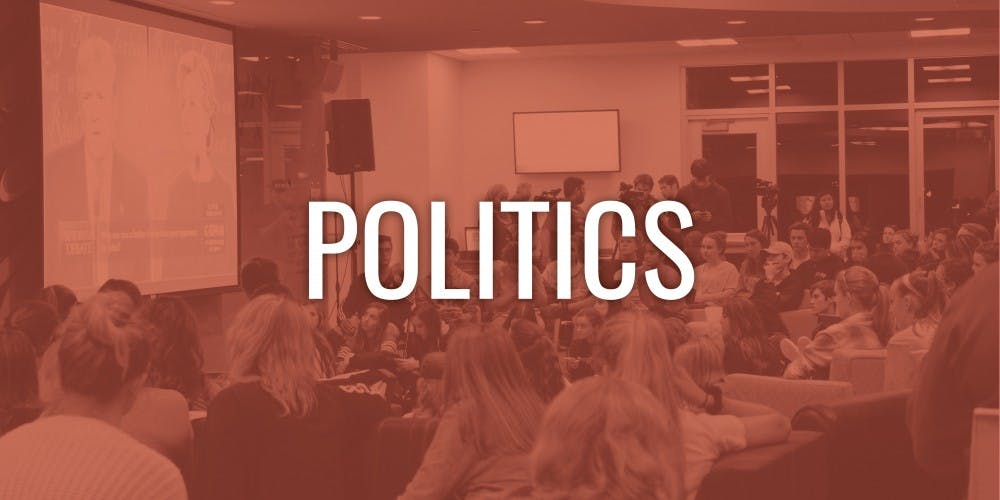In the 2016 election, 50.4 percent of students in over a thousand secondary-level institutions voted, according to the National Study of Learning, Voting and Engagement (NSLVE).
Elon University fell short of the national average, with only 43.9 percent of students casting their ballots in the presidential race, according to NSLVE.
Senior Gabby Vance is the student coordinator of Elon Votes, a nonpartisan organization comprised of students and faculty members dedicated to increasing student voter registration.
While 77.7 percent of students registered to vote, Vance did not see the decline in voter turnout as a matter of indifference among students, but as the result of a rising out-of-state population. With over three quarters of students coming from 49 states and the District of Columbia, students are presented with the challenges of filling out absentee ballots.
“I’ve found that so many students did register, but just because every state operates a little differently, it’s harder for students to follow through with that,” Vance said. “Being a Maryland resident, I know that absentee
process takes a lot of effort.”
To address the problem of absentee ballots, student volunteers of Elon Votes worked over 40 hours a week in the Kernodle Center for Service Learning and Community Engagement to help students understand the process of filling out their absentee ballots.
“We ended up finding that any time the Kernodle Center was open, students would come in, and we would provide the resources, like the stamps and envelopes,” Vance said.
Bob Frigo, associate director of the Kernodle Center, also stressed the use of TurboVote, a web portal that gives students access to forms, deadlines and reminders.
“Between June and November 2016, 1,465 students signed up for a TurboVote account to start the process of requesting an absentee ballot,” Frigo said. “We drive students to the website, but we also do other activities too.”
Activities for promoting civic engagement among students ranged from registration table at College Coffee to a panel on election night. “I think that the university did more for the 2016 election than we had ever have done, to help prepare and support students in terms of voter registration and civic engagement,” Frigo said.
Despite efforts to get out the vote, discrepancies in the NSLVE report showed gaps in voter turnout between gender. Only 35.8 percent of men voted in comparison to 48.3 percent of women, which was an 8.2 percent decrease since 2012. Besides the gender gap, the report featured breakdowns between race and field of study.
“We’re still planning with some ongoing practices to how we adapt to the data,” said sophomore Rob Bullard. “But as of right now, we do not have a plan to target any group specifically.”
Beside analyzing the data, faculty members remained optimistic about the 2018 midterm elections, based on the aftermath of this year’s Virginia and New Jersey gubernatorial elections. Carrie Eaves, assistant professor of political science, noted the importance of student turnout in the midterm election cycle.
“Everyone will have an election they can vote in,” Eaves said. “Absentee ballots are an important obstacle, but reminding people and making [the 2018 elections] feel important. We are just trying to encourage students to exercise their right.”


